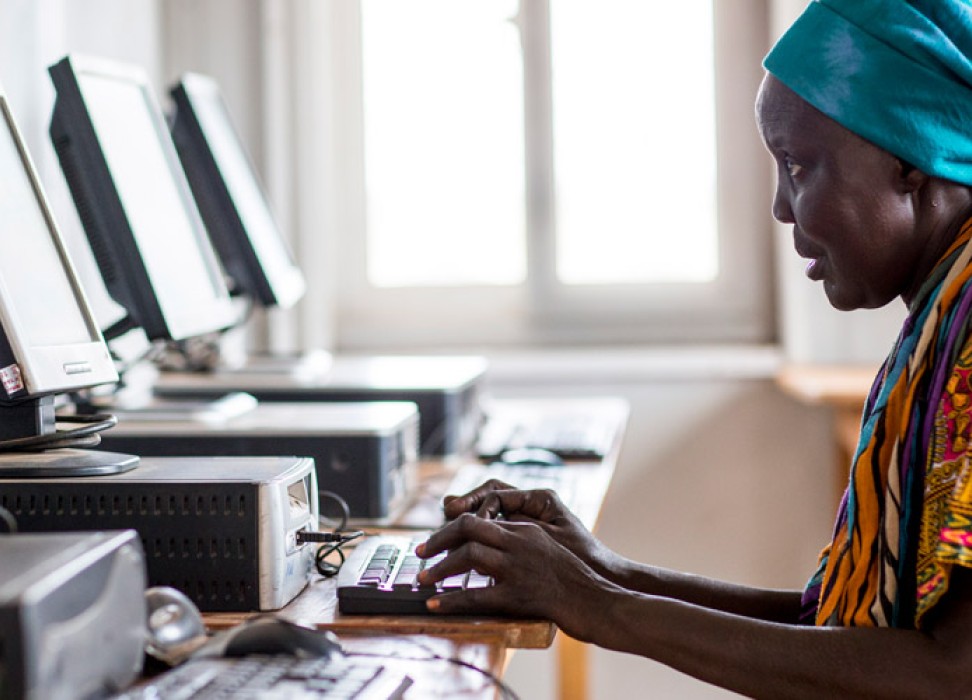Bridging the digital gender divide
11 July 2018

For Rokhaya Solange Ndir, Head of Digital Ecosystem Relations for Sonatel in Senegal, getting more women and girls involved in ICT is summed up in the simple idea: if you build it, they will come.
According to the Global Entrepreneurship Monitor (GEM) Women’s Entrepreneurship 2016/2017 report published in 2017, Sub-Saharan Africa has the highest average female entrepreneurship activity in the world at nearly 26 percent. Yet many of these businesses are informal or offline, Ndir said. And women were not accessing many of the programmes available to assist them. So, her company, Sonatel, Senegal’s biggest telephony company decided the best way to get women entrepreneurs online was to create schemes aimed at them. This included Mwoman – which rewards female digital entrepreneurs for innovation as well as organises boot camps to train women to use the internet for business and beyond.
The results, said Ndir, have been remarkable. There has been an increase of women entrepreneurs online. And in her own company, Sonatel, boasts that its board of directors is 40 percent female.
“Women themselves have an important role to play,” she said. “They must make their voices heard and continue their activism. No one can defend them better than they do.”
ICT has the potential to advance women’s rights in the economic and social spheres, said UN Deputy High Commissioner for Human Rights Kate Gilmore. Yet, advancement in technologies has seen a gradual pushing out of women from the digital space, with few women creating the technology or being active in decision making surrounding it.
“The huge potential of ICTs enhancement of women’s and girl’s enjoyment of rights is yet to be realised for a persistent and growing gender digital divide is working against this,” she told the Human Rights Council during a June discussion on women and access to ICT entitled Advancing women’s rights in the economic sphere through access and participation in information and communication technologies (ICTs).
Another way to better engage women and girls in ICT is to ensure that fairness exist deep in the foundations of emerging technology, said Chenai Chair, from Research ICT Africa. Today’s emerging and data driven solutions, particularly artificial intelligence (AI), still bear the risk of copying existing harmful gender stereotypes and patterns of discrimination against women, she said. Why? Because innovation exists within a context of social and cultural norms that do not necessarily promote gender equality, she said.
“Bias against women starts from who is involved in the design of machine learning and what is their focus,” Chair said. “To ensure that we may capture the gains of AI, we need to understand what is happening through research and thus better inform policies.”
Much of this has to do with the nature of human society. Technology is built by humans and as a result, reflects many of the same strengths and weaknesses that they possess, said Basheerhamad Shadrach, Asia Coordinator for the Alliance for Affordable Internet, World Wide Web Foundation.
“Gender stereotypes that prevail in communities are often reflected also in online spaces, especially when the web is supposedly a tool that needs to offer safe and secure environment for women to learn, participate and be productive,” he said.
Trends for women and girls participation online are not promising. According to an ITU Report “Women in Tech: The Facts”, the percentage of women in computing jobs has been on the decline. In 1991, women held 36 percent of these jobs. As of 2015, that number had dropped to 25 percent, and for women of colour that number was even lower.
Various reports also show that the overall digital gender gap is widening, with one estimate that there are 200 million fewer women online than men, Eva Kjer Hansen, Danish Minister for Fisheries and Equal Opportunities told the Human Rights Council at the same panel discussion. With 90 percent of jobs expected to require ICT skills (according to a World Economic Forum study), “enhancing women’s and girls’ access to and use of information and communication technology can help close the digital gender gap and empower women to take leadership of their own life and claim their rights,” she said.
11 July 2018

